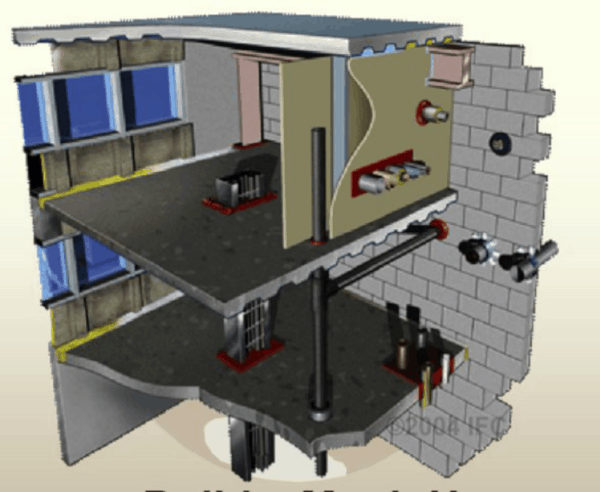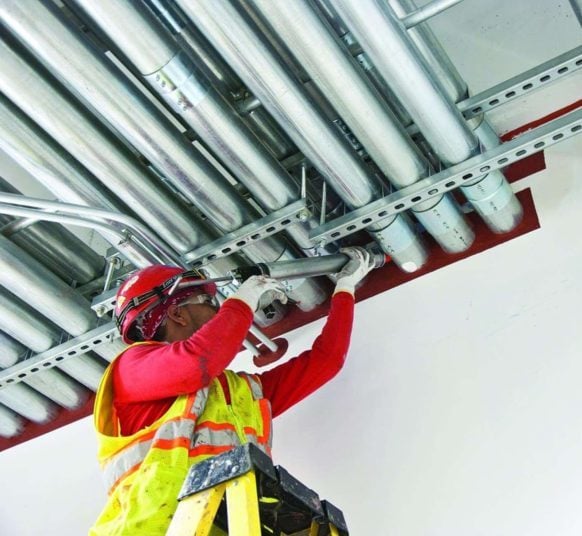Passive Fire Systems Are Best Described as
An important criterion in deciding. Passive Fire Protection consists of elements utilized to keep a building safe so that fire doesnt spread and no action is needed to it to work.

Unpack Your Dream House On A Tight Budget Arch2o Com Arsitektur Desain Arsitektur Bangunan
Your Fire Safety System Could Be Falling Short.

. No action is required for this to kick-in. Examples of passive systems include floor-ceilings and roofs fire doors windows and wall assemblies fire-resistant coatings and other fire and smoke control assemblies. Fire protection systems can be categorised as either active or passive.
Passive fire protection systems include structural fire resistance compartmentation fire-rated walls floors and protection of the openings through them fire doors fire dampers firestop systems. Passive fire protection involves the use of building components to control or limit a fire. Protecting the assets within a building.
Having active fire protection will help to fight a fire and reduce the damage that a fire causes. Passive protection refers to fire resistance measures. Passive fire protection works alongside Active Fire Protection which well cover in more detail below such as sprinkler systems fire extinguishers and the ongoing fire.
Three common design intents for building fire safety systems include. In the case of electrical substations passive fire protection systems like those used in transformer fire. Passive fire protection systems are specified systems and require regular inspection maintenance and reporting.
The common elements of all signal systems are best described as. Protect occupants building and contents. The key elements of passive fire protection systems are fire-resistant walls.
Passive fire protection PFP also known as fireproof coating is the most common way used to protect main structural elements that support walkways open escape routes and process vessels containing hydrocarbon Friebe Beom-Seon. While active fire protection systems are activated by a fire passive fire protection systems work to prevent the fire from starting in the first place. Protecting the structural integrity of a building.
Stressing the equal importance of passive built in and active fire protection measures Mr Foye declared. This usually consist of fire-resistant floors and walls. Passive Fire Protection PFP is a group of components used to compartmentalise a building so come the outbreak of a fire - it will contain or slow the spread.
Fire-protection barriers and walls to prevent the spread of fire can also be used. Walls floors and ceilings can be designed and constructed to resist the passage of fire and smoke. This resistance is generally structural and designed to compartmentalise your building and isolate a flame.
The best form of fire protection is passive ie it is effective regardless of actions taken by individuals or active safety systems. Passive Fire Protection PFP is a group of systems that compartmentalise a building through the use of fire-resistance-rated wallsfloors doors and gap-filling measures. What is Passive Fire Protection PFP.
In a passive system stationary materials are designed to help prevent the spread of fire or smoke keeping the fire to its original area and stopping it from spreading through the building. Passive fire protection PFP is components or systems of a building or structure that slows or impedes the spread the effects of fire or smoke without system activation and usually without movement. It is an integral component of structural fire protection in a building which is designed to contain fires or slow their spread.
When combined with an active system a passive system can help put out a fire faster and stop a lot of damage from occurring. As its name suggests passive fire protection PFP is a form of fire safety provision that remains dormant or inert during normal conditions but becomes active in a fire situation. Therefore maintaining sufficient separation between equipment items is the best form of passive fire protection.
Compartmentalising your building into smaller sections helps to slow or prevent the spread of fire andor smoke from one room to the next. Passive fire protection systems are always protecting a building against fire and do not require any action to operate. While active systems are designed to help fight fires such as fire alarms and sprinklers passive fire protection describes the structural measures which prevent the passage of flames and smoke.
In other words a fire-sprinkler system alarms and detection systems and occupant education in conjunction with passive fire-protection systems are a safer more balanced approach to protecting your building and the people inside. These systems are all about preventing the spread of flame and resisting ignition in the first place. Passive Fire Protection systems are built inside the building.
Passive fire protection is valuable both for the safety of building occupants and for the minimising of. PFP is typically considered when a building is constructed. Initiator processor and indicator.
For example a wall with a one-hour fire resistance rating is built as a barrier to resist the passage of a standard fire for one hour. He described how fallen cables poor signage and a complex building layout had hampered firefighting operations and explained how fire behaviour at an incident influences operational decisions. Active fire protection systems use fire resistance measures to prevent a flame from igniting and.
Fire walls are another form of passive fire protection that are used to prevent the spread of fire and the exposure of adjacent equipment to thermal radiation.

The Basics Of Passive Fire Protection Buildings

Production Makes The City Future Architecture Urban Planning Industrial Trend City

Passive Fire Protection Market Global Industry Trends And Forecast To 2028 Fire Protection Industrial Trend Fire

Understanding Fire Compartmentation In Buildings Sprinkler Penetrations

A Beginner S Guide To Passive Fire Protection

Method Statement For Installation Of Clean Agent Fire Suppression System Method Statement Hq Fire Suppression Fire Suppression System Fire Systems

Passive Fire Protection Project Corecut Fire Protection Fire Protection Services Fire

Sprinkler Systems To Meet Building Codes Sprinkler System Sprinkler Sprinkler System Design

Rise Shine Industrial Paintings Fire Protection Shine

Helpful Infographic Visualizes What A Net Zero Home Looks Like Eco Architecture Green Architecture Sustainable Architecture

Fire Protection System Which Is Better Active Or Passive Safetyfrenzy Fire Protection System Fire Protection Fire Alarm System

Passive Down Draft Evaporative Cooling Pdf Electromechanical Engineering Air Conditio Electromechanical Engineering Wet Bulb Temperature Ventilation System

Fire Alarm Horn Strobe Wiring Diagram Best Of Fire Alarm System Alarm System Fire Alarm

What Is The Role Of Compartmentalisation Within A Building Facing A Fire And How Is It Done Nullifire Uk

Active Fire Protection An Overview Sciencedirect Topics

Six Proven Ways To Build Energy Smart Walls Building A House Sips Panels Structural Insulated Panels

2 031412 Gif 540 556 Hvac Design Hvac Ductwork Refrigeration And Air Conditioning

Comments
Post a Comment